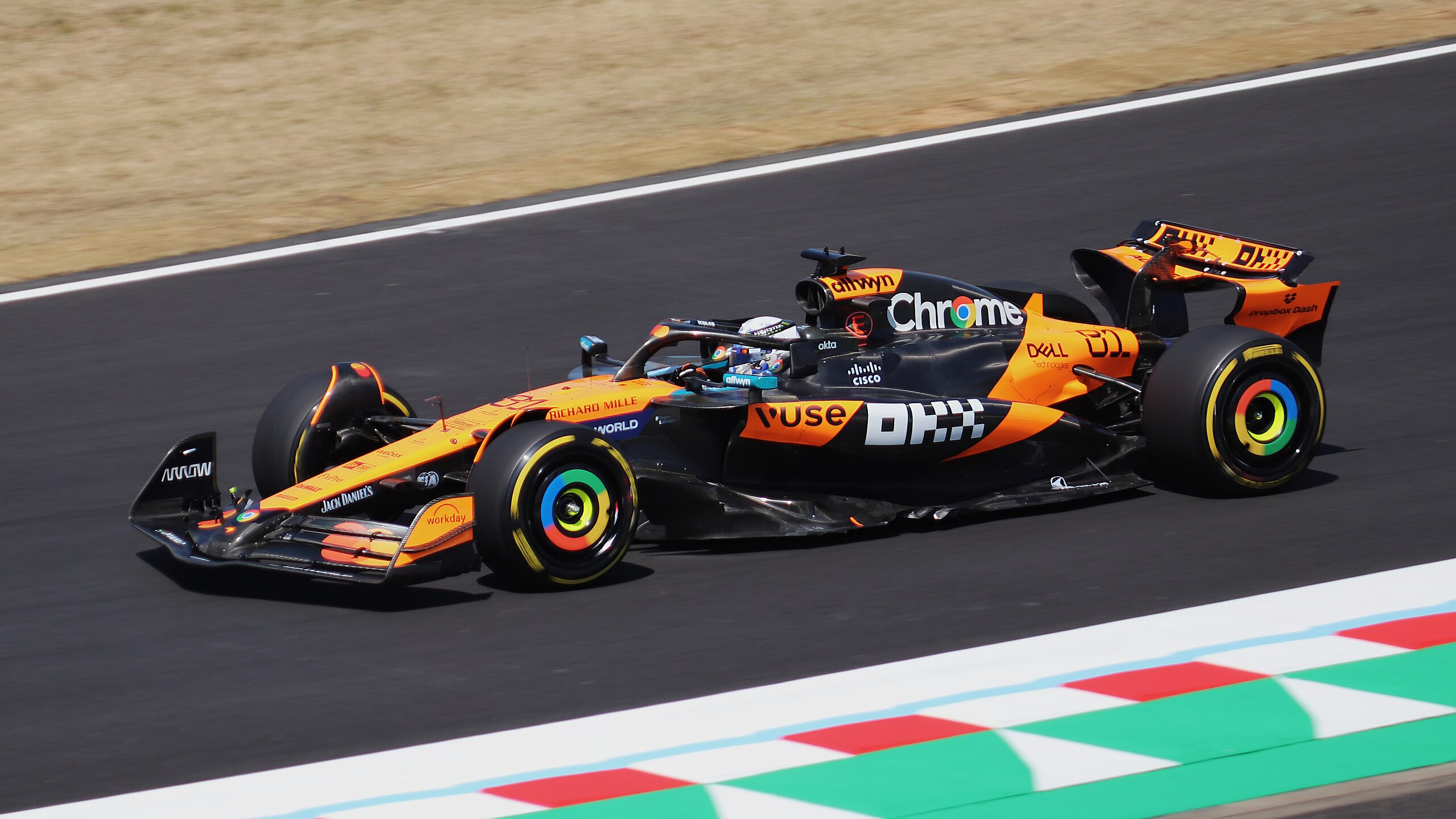Are you willing to sponsor?
Are you ready to explore the transformative power of athlete sponsorship for your brand? Click here to learn more about how sponsorship can help brands grow and thrive in the exciting world of motorsports.
By Riccardo Tafà| Posted February 8, 2021 | In Marketing Sportivo, MotoGP, Sponsorizzazioni Sportive
A sponsor must know how to measure the value his or her investment has created. The ROI calculation not only provides an assessment of what happened, but is also a useful tool for considering future events and sponsorships.
The acronym ROI stands for Return on Investment (ROI). For the
marketing and accounting, ROI is both a financial forecasting tool and a tool for analyzing past operations. This means that, for a company, the study of ROI is important for both future (forecasting) and current evaluation (analysis).
To be more specific, ROI calculation is a mathematical method that is used to know and evaluate the risks of an investment; it is also used to calculate the possible gains that result or will result from it. Evaluating sponsor ROI is a must.
ROI is a financial tool. It is measurable solely as a consequence of economic income, or expenditure. True ROI is in no way tied to “soft” data, such as may be brand awareness, “click-through rates,” or web statistics. The classic formula to measure ROI is as follows:
(Total Revenues – Total Costs)
_______________________ X100 = ROI%
Total Costs
ROI is always expressed as a percentage so that it can be easily compared with other activities undertaken.
 Net Revenues…The Sore Note
Net Revenues…The Sore NoteOne of the key values in the equation is that of Net Revenue: this figure represents the profit (or loss) that results from the marketing initiative considered over a finite, fixed period of time.
As obvious and obvious as it may seem, getting financial data right is one of the hardest tasks for marketers. A November 2008 study by Jupiter Research among more than 100 marketing managers in the United States found that 78 percent of managers complain of great difficulty in obtaining sales data from their company’s administrative offices…and without this first step you cannot do anything.
Good sponsorship is one that, among other things, is able to increase sales by impacting the bottom line by generating profit. If we wanted to summarize:
Sponsorships = Brand Exposure –> Brand Awareness –> Brand Preference –> Propensity to Buy
Frequent exposure of the brand ensures that it becomes an integral part of the sponsored sport, athlete, or event and that the positive values of the discipline settle on the brand and product. In this way, sponsorship succeeds in building a strong emotional bond between brand and fans.
The target audience, which constantly sees a brand within the events they like develops, brand preference for the same. This Brand preference directly impacts his buying decisions (about this see also “Analyzing the influence of attitude toward sponsor and sponsorship awareness to purchase intention in Manado. Case Study: MotoGP.”) and we can measure how much this impact is worth, in fact measuring sponsorship roi will give us a clear idea of the efficiency of our sponsorship investment from a mere commercial point of view. With actual numbers in hand a marketing executive will be in the perfect position to compare the Roi of the sponsorship with the roi of other communication and promotional activities.
What matters, regardless of the brands involved, is that the sponsorship and related activities are authentic, that the values of sports discipline and brand are consistent, and that the company implements all activities necessary to get the most out of the partnership.
And all this is possible only if the sponsorship is genuine and responsive to the sponsor’s identity and respects the universe of corporate values by proving credible in the eyes of fans and consumers.
One of the exercises in which to engage is to generate valid and reliable predictions about the future and long-term profit possibilities from a sponsorship. One example is Customer Lifetime Value, which is the value that a consumer represents to a company over its entire lifetime. ROI allows us, by considering the cost of acquiring a customer and its value over time, to calculate the long-term benefits of our operations.
It is possible to measure the ROI of a multi-year program by looking at the resources committed and revenues earned over a given time frame, usually 3 or 5 years:
Suppose a project has an ROI of 200%. The net earnings of this project are estimated to be twice the cost of activating the project. Even more simply, for every euro invested, the project will generate 2 euros of profit, plus 1 euro of cost coverage so for every euro invested, the project produces 3 euros. The ROI is therefore 200%.
Generally, the ROI calculation takes into account the total investment costs over the period analyzed and considers possible lowering of total costs and revenues. The cash flows of such a project can be summarized as: Starting year, 1st year, 2nd year, cumulative, total.
According to a 2003 survey conducted by International Data Corp./Alinean, 62% of executives say that the ROI of a project, to be considered satisfactory, should be between 50% and 300%. Regardless of the results of the project, transparent evaluations require that all expenses and revenues have been taken into account and that all data have been measured accurately.
Calculating ROI creates value for a company because:
For information on calculating ROI or how sports sponsorship can help your business, write to us via the form on this page or by email to info@rtrsports.com.
Are you ready to explore the transformative power of athlete sponsorship for your brand? Click here to learn more about how sponsorship can help brands grow and thrive in the exciting world of motorsports.

Managing Director for RTR Sports, Riccardo graduated in law at the University of Bologna. He began his career in London in PR, then started working in two and four-wheelers. A brief move to Monaco followed before returning to Italy. There he founded RTR, first a consulting firm and then a sports marketing company which, eventually, he moved back to London.
The online platform where you can discover the latest trends, strategies and insights from the exciting world of sports marketing.
View our blog
June 18, 2025
When you think of sports, what comes to mind? For many, the answer is sports marketing management. We see Super Bowl or Olympic commercials and it seems like every other product is marketed t[...]
Read More
January 1, 2025
Sport sponsorship is a dynamic and potent marketing strategy that has become deeply ingrained in the fabric of modern sports. As stakeholders in the sports industry increasingly recognize the[...]
Read More
December 23, 2024
The sports sponsorship represents an extremely effective marketing tool for companies, capable of creating deep emotional bonds with audiences through the passion and enthusiasm that characte[...]
Read MoreIn an era where it is possible to get anywhere with a click, there is a strong temptation to approach teams and properties directly for sponsorship projects.
By doing so, we are convinced that we are shortening the value chain, saving time and money. However, these DYI methods are anything but risk-free and what initially appears to be a competitive advantage soon turns into a problem that is difficult to resolve. That’s why there are agencies. And this is why you should rely on us for your sponsorships.
When first approaching a sponsorship or sports marketing project, it is difficult to know immediately which stakeholders are correct, what the decision flow is, and what the right timelines are for each process. Sports is a very specialized field of action, and fitting effectively into its paths can take a lot of time and therefore money. We, on the other hand, know referents and spheres of action and know who to talk to, when and how. So you are also more effective.
Sports is an immense passion, and for our heart colors we would be willing to do anything. But business is a different business, and it is important to make the best possible strategic decisions based on independent research, statistics and reliable data. A sports marketing and sports sponsorship agency like RTR has an objective, 360-degree picture of the scenario and can tell you what is really best for you: which sport, which athlete, which team. This is because we possess a great deal of data and information on ratings, segmentation and attitudes. Because the numbers don’t lie. Never.
Activations are the real heart of sports sponsorship. Without them, there remains only a blank sticker on a motorcycle, car or uniform and no contact with the public, no emotional connection, no impact on the bottom line. Then how do you do it? It certainly won’t be the teams or the athletes who will help you leverage sponsorship and enjoy the many marketing rights you have paid for. To bring out the best in a sports marketing project you need an agency that knows how to use sponsorship to engage the fanbase on the Web, to reach out to Shopping Centers, to organize hospitality, to develop B2B and B2C opportunities, and to get “your” athletes in front of millions of potential consumers.
Would you ever go to the dealer who sold you the car and ask if the competitor’s car is better? No, of course. So, how do you expect to get firm measurements of the effectiveness of your sponsorship if you do not rely on someone super partes? At RTR, we have always worked with independent third-party agencies that allow us to know the return on any exposure of your brand on TV and in the media. In addition, we believe in calculating ROI as the ultimate measure of your success-so we can tell you for every penny you spend how much you are making.
We have been involved in sports sponsorship and sports marketing for more than 15 years. We are consultants in the sense that our goal is to maximize your investment, but we are also an agency that manages the project from start to finish. We have been doing this since 1995 with passion and professionalism, following three principles that have become cornerstones of our business: independence, verticality and transparency.
I would like to highlight the fact that one of the qualities of RTR is its great ability to approach the sponsorship scenario strategically, together with its passionate attitude, its amazing enthusiasm for solving problems, and its high level of professionalism.
Gianluca Degliesposti
Executive Director Server&Storage EMEA
Eurosport is truly delighted with its business relationship with Riccardo Tafà, who has become extremely popular, thanks to his detailed knowledge of the sports marketing sector and his highly diligent attitude to work.
Francois Ribeiro
Commercial Director
Passion and Expertise are the features that I have found in RTR since the very beginning. Serious and reliable professionals but also very helpful, nice and open-mind people, willing to listen and compare different ideas. All the values in which RTR believes make this agency a partner, not just a supplier, a partner with whom we have had the opportunity to achieve significant commercial results in term of success and image.
Luca Pacitto
Head of Communication
We have been working with RTR Sports Marketing for over 10 years. The objectives and the programmes of collaboration continue to be renewed and to grow with mutual satisfaction. I believe RTR is a team of great professionals led by Riccardo Tafà, who I consider a manager of exceptional skills and with a great passion for his work.
Lucio Cecchinello
Team Principal
I have known and worked with Riccardo Tafà since 1995 when we collaborated for the first time on a project for the Williams Formula 1 team. Several clients followed. After leaving Williams to work for Gerhard Berger then owner of the Toro Rosso F1 Team, I turned again to Riccardo to seek his help in finding a tool supplier for the team and Riccardo duly obliged with an introduction to USAG, a partnership with Toro Rosso which endured for five years. I recently started a new role as Group Commercial Director for the renowned Andretti Autosport organisation and I find myself working with Riccardo once again on a number of interesting projects. Why has this relationship with Riccardo endured ? He’s smart, knows the commercial side of sport inside out and back to front and he’s honest and trustworthy. Riccardo Tafà is a “doer” not a “talker”: in over 20 years I have never had a dispute either with him or with a company that he has introduced and each partnership introduced by Riccardo has delivered quantifiable ROI to rights holder and sponsor alike. I can think of no better testimonial of Riccardo’s diligence, knowledge, contact base and hard work than that.
Jim Wright
Group Commercial Director
The online platform where you can discover the latest trends, strategies and insights from the exciting world of sports marketing.
View our blog
July 1, 2025
In the complex and exciting world of Formula 1, performance no longer belongs exclusively to wind tunnels and race strategies. It also unfolds in boardrooms, brand labs, and experiential mark[...]
Read More
June 26, 2025
The European Commission has provided Liberty Media Corporation with unconditional approval to complete the acquisition of the MotoGP World Championship. The process of annexing the top motorc[...]
Read More
June 18, 2025
When you think of sports, what comes to mind? For many, the answer is sports marketing management. We see Super Bowl or Olympic commercials and it seems like every other product is marketed t[...]
Read More